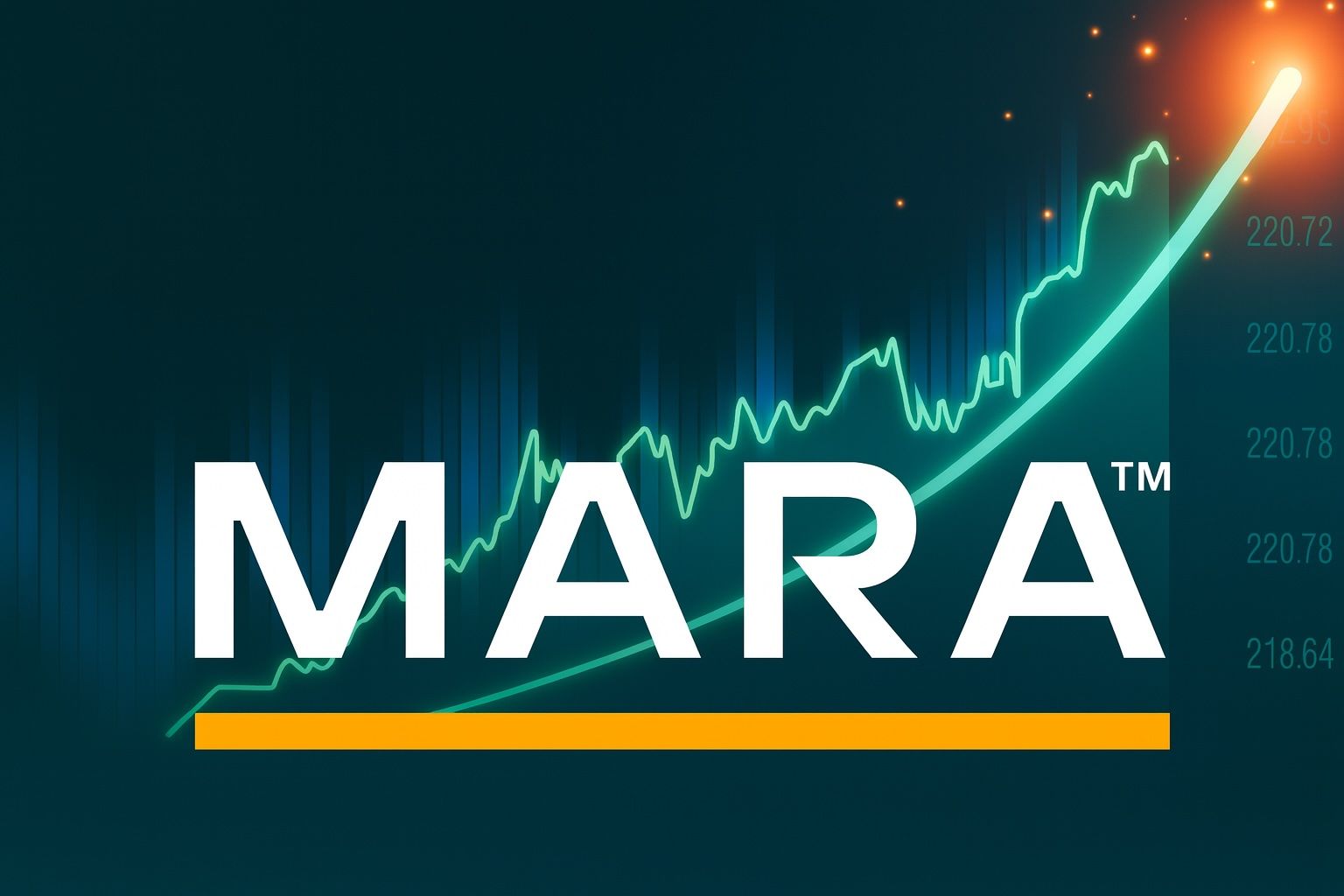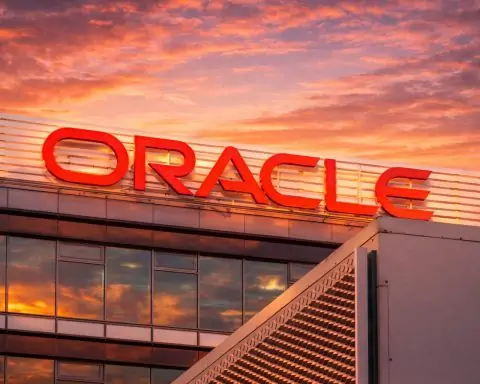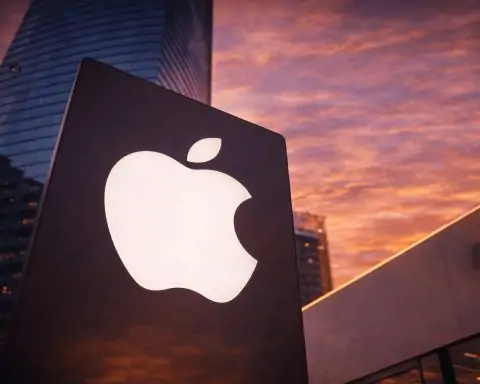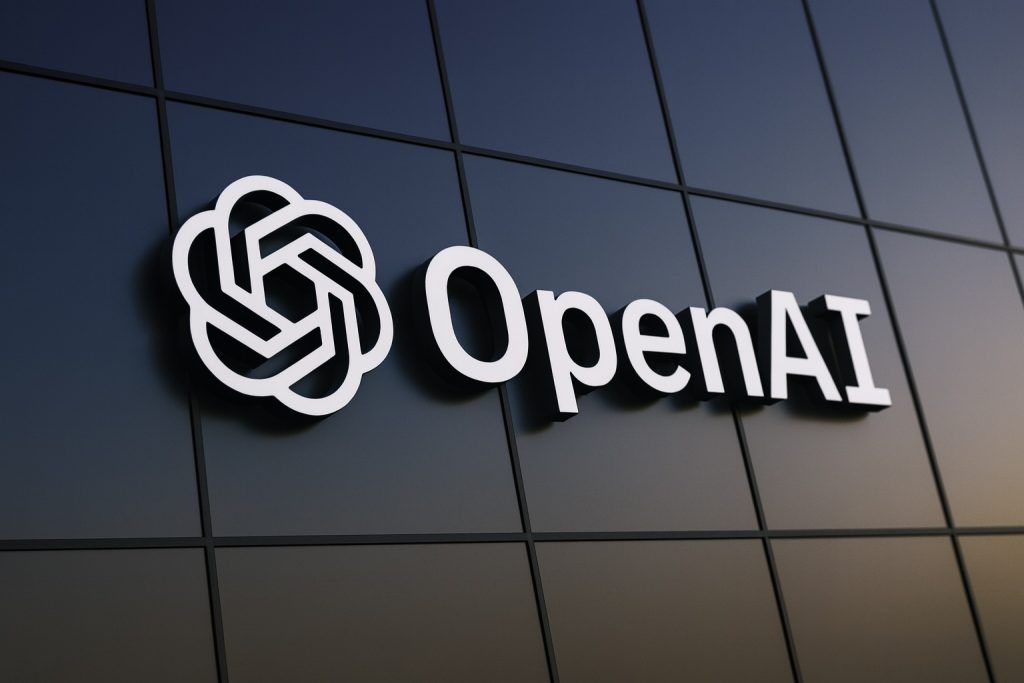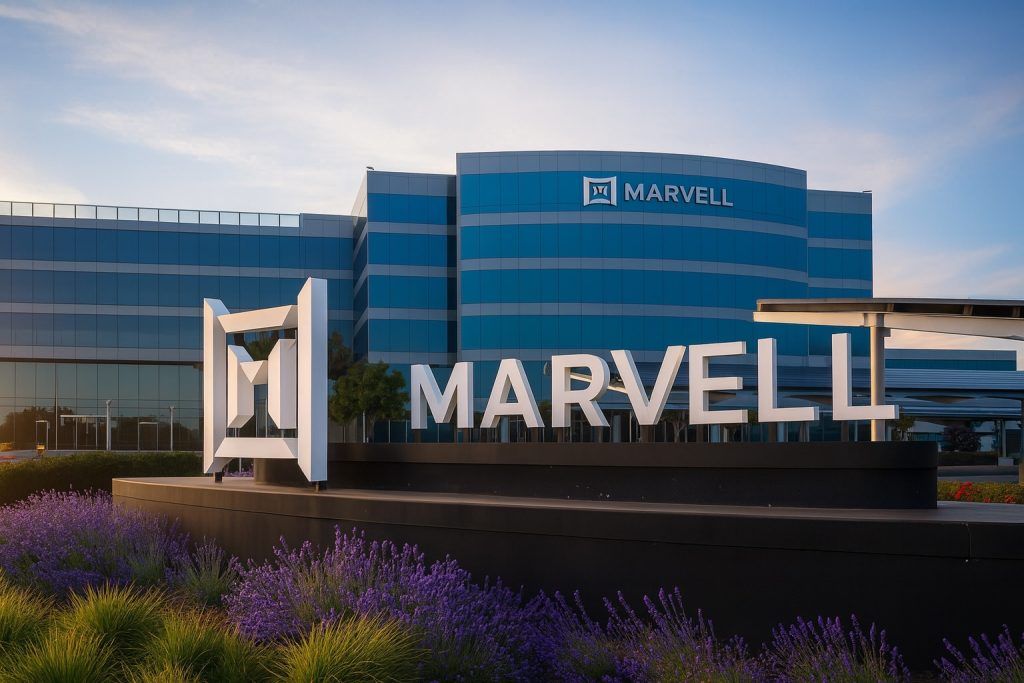- Bitcoin Rally Lifts MARA: Marathon Digital’s stock surged nearly 17% in late September 2025 amid Bitcoin’s “Uptober” rally toward ~$124K [1]. Shares traded around $18.80 in early October, giving Marathon a ~$7 billion market cap [2]. Analysts maintain a “Strong Buy” consensus on MARA, with a median 12-month price target near $23 (about 20% above current levels) [3] [4].
- Record Bitcoin Production: Marathon mined 736 BTC in September 2025, a 4% increase from August, despite a 9% rise in network difficulty [5]. This brought its Bitcoin holdings to 52,850 BTC (worth ~$6.5 billion at ~$124K/BTC) [6], solidifying Marathon’s position as the second-largest corporate holder of Bitcoin (behind MicroStrategy) [7]. The company achieved 60.4 EH/s of hash rate capacity, as new Texas wind-powered mining farms and the Ohio facility came fully online [8] [9].
- Financial Turnaround: Marathon posted record revenues of $238.5 million in Q2 2025 (up 64% YoY) and an unexpected profit of $808 million, aided by mark-to-market gains on assets [10]. It raised $950 million via convertible notes to fuel expansion and Bitcoin purchases [11]. New U.S. tax guidance will also shield Marathon from taxes on unrealized gains in its Bitcoin treasury [12] [13], a relief given its 50k+ BTC hoard.
- CEO’s Bullish Outlook: Marathon’s CEO Fred Thiel remains extremely bullish on Bitcoin. In a January 2025 interview, he predicted BTC could dip to the ~$90K range then “run… approaching $200,000 by the end of [2025]” amid surging demand [14]. Thiel says Marathon’s consistent execution – even as mining “becomes more difficult” – underscores its resilience [15]. Management emphasizes maximizing uptime and deploying new technology to stay ahead of rising mining difficulty.
- Competitive Position: Marathon is among the world’s largest Bitcoin miners, outpacing key rivals in scale. It produced 736 BTC in September versus 629 BTC for CleanSpark and 445 BTC for Riot Platforms [16] [17]. Marathon’s hash rate (~60 EH/s) now doubles Riot’s (~35 EH/s) and slightly exceeds CleanSpark’s (~50 EH/s) [18] [19]. Marathon also HODLs far more Bitcoin (52K BTC) than Riot (~19K) or CleanSpark (~13K) [20] [21], reflecting its strategy to accumulate coins. All three are benefiting from 2025’s crypto bull market, but Marathon’s sheer scale and treasury give it outsized leverage – and exposure – to Bitcoin’s price movements.
- Sector Tailwinds & Challenges: Crypto mining stocks like Marathon have soared in 2025 alongside Bitcoin’s climb (the crypto market hit ~$4 trillion in value) [22]. U.S. regulatory shifts – including progress toward spot Bitcoin ETFs – are boosting investor optimism [23] [24]. However, the April 2024 Bitcoin halving and a global hash rate above 1 zettahash have pushed mining difficulty to record highs, squeezing profit margins despite Bitcoin’s price near all-time highs [25]. Marathon and its peers face rising energy costs and competition; only miners with low-cost power or diversified revenue (e.g. computing services) are expected to thrive long-term [26].
Bitcoin “Uptober” Powers Marathon’s Stock Surge
October 2025 finds Marathon Digital Holdings riding high on a wave of Bitcoin enthusiasm. In the first week of October, Bitcoin’s price blasted past $120,000 – approaching its all-time highs – in what crypto traders dub an “Uptober” rally. As a high-beta proxy for Bitcoin, Marathon’s stock (NASDAQ:MARA) has been quick to amplify these gains. The shares jumped about 16–17% in late September alone as Bitcoin spiked toward $124K [27]. This momentum continued into early October, with MARA hovering around $18–$19 per share (roughly a $7 billion market valuation) [28].
Investors see Marathon as a liquid, stock-market way to bet on Bitcoin’s fortunes – for better or worse. When BTC soars, MARA often soars further, and when BTC pulls back, MARA can sink faster. This volatility is reflected in the stock’s 4+ beta, indicating moves several times more volatile than the broader market [29]. 2025 has been a wild ride: after an explosive 590% rally in 2023, Marathon’s stock gains were more muted through mid-2025 (up only ~8% year-to-date by early October) [30]. That relative underperformance (versus some smaller mining peers) suggests a lot of optimism was already “priced in” – and indeed Marathon had issued new shares and debt to fund its growth, tempering per-share gains [31]. But the recent Bitcoin breakout breathed new life into MARA. Heavy trading volumes and even technical signals (like a bullish “golden cross” pattern) have drawn in momentum traders, making Marathon one of 2025’s trending stocks in the crypto and tech space.
Wall Street analysts, on balance, remain bullish that Marathon’s upside isn’t over. According to Yahoo Finance, most brokerages rate MARA a “Buy” or better, even though the company is not expected to show GAAP profits every quarter [32]. The average 12-month price target sits in the low-to-mid $20s [33] [34]. That implies moderate upside (~20%) from current levels – a reflection that Marathon’s prospects are strong but largely tied to Bitcoin’s trajectory. As one market research firm notes, the latest consensus on Marathon is “bullish”, with a median target of $23 (range $18 to $28) and 13 out of 13 analysts rating it a Buy or Hold (0 Sells) [35] [36]. In short, experts see Marathon as one of the premier plays on a continuing crypto bull market. But they also caution that its fate will swing with crypto volatility. “The road’s far from smooth” for miners, one Yahoo Finance commentary warned, given high operating costs and the need for Bitcoin prices to stay elevated [37]. Still, with Bitcoin itself gaining mainstream legitimacy – U.S. regulators in September opened the door for spot Bitcoin ETFs, a “watershed moment” expected to unleash a wave of mainstream investment [38] – sentiment toward miners like Marathon has markedly improved from the bear-market blues of 2022.
September Production Hits Record Highs
Marathon’s latest operational update showcases record mining output and major milestones in its expansion. In September 2025, Marathon produced 736 newly minted bitcoins, up 4% from the 708 BTC mined in August [39]. This was achieved even as the overall Bitcoin network’s hash rate and difficulty jumped ~9% month-over-month to all-time highs [40]. In other words, Marathon managed to increase its slice of the Bitcoin pie despite a more competitive environment – a sign of growing efficiency and capacity. “This growth in production underscores our ability to execute consistently, even as mining becomes more difficult,” said CEO Fred Thiel, highlighting that Marathon’s operations are delivering despite industry headwinds [41].
Key drivers of September’s output were Marathon’s aggressive infrastructure build-outs finally coming to fruition. The company confirmed that by the end of Q3 2025, all mining units at its new Texas wind farm and its data center in Ohio were fully deployed and energized [42]. The Texas facility – which taps into a wind power farm – and the Ohio site (currently running at 86 MW, with an additional 14 MW planned by year-end) have significantly bolstered Marathon’s hash rate. In September, Marathon’s energized hash rate reached ~60.4 exahashes per second (EH/s), a roughly 1% increase from the prior month and a new record for the company [43]. For context, 60 EH/s is an enormous amount of computing power: it represents a substantial share of the entire Bitcoin network. Marathon’s hash rate has more than doubled from a year earlier, and now stands among the highest of any single miner globally. (By comparison, competitor Riot Platforms was around 35 EH/s mid-2025 [44], and CleanSpark about 45–50 EH/s by fall 2025 [45].)
The Texas wind-powered site is particularly noteworthy – it’s part of Marathon’s push to integrate renewable energy and lower its electricity costs. Marathon’s team noted they expect to cut power bills by 20–30% through wind energy and “behind-the-meter” arrangements that bypass some grid fees [46] [47]. Lower energy costs directly improve mining profit margins, especially crucial as mining difficulty climbs. Marathon’s expansion in wind-friendly Texas mirrors a broader industry trend of miners seeking cheap, sustainable power (Texas has also attracted rival Riot, which has long-term power contracts around 2.5–3.5¢/kWh in the state [48]).
Investor response to Marathon’s September report was upbeat. The stock popped nearly 3% on Oct. 3 when the production figures came out [49] [50]. Marathon’s market capitalization hovers just over $7 billion after these gains [51]. Traders were encouraged not only by the higher Bitcoin output, but by milestones achieved: Marathon is entering Q4 2025 with its major new facilities online and fully hashing. That sets the stage for potentially even higher production in the coming months – assuming Bitcoin’s network conditions cooperate. Marathon’s tweet on the results noted it won 218 block rewards in September (5% more than August) and reiterated the headline numbers (736 BTC mined, 52,850 BTC held) [52]. The company framed it as ending the quarter on a strong note operationally, which, coupled with the Bitcoin price rally, has strengthened its hand going into year-end.
Hoarding Bitcoin: Marathon’s Treasury and Financial Health
One aspect that distinguishes Marathon Digital is its massive Bitcoin treasury. Marathon follows a “HODL” strategy – retaining a large portion of the bitcoin it mines rather than selling everything – to build up a war chest of digital gold. As of September 30, 2025, Marathon held 52,850 BTC on its balance sheet [53]. At current prices, that stash is worth roughly $6.4 billion. This is the second-largest Bitcoin holding of any publicly traded company, behind only MicroStrategy (which holds over 150K BTC) [54]. It’s an astonishing accumulation, considering Marathon had just 8,100 BTC at the end of 2021 [55] – the firm effectively 6× its Bitcoin hoard in under four years.
Notably, Marathon’s BTC holdings grew in September even though the company was not purely stockpiling every coin. In fact, Marathon disclosed it was a net seller of bitcoin in September, selling a portion of its monthly production for cash [56]. This marked a strategic shift: it was reported as the first time in over a year that Marathon sold as much as half of its monthly mined coins [57]. The company sold several hundred BTC during September to help fund operations and expansion, but importantly it still mined more than it sold. As a result, Marathon’s reserves rose from 50,639 BTC on Aug. 31 to 52,850 BTC by Sep. 30 [58] [59]. In other words, even while monetizing some output, Marathon continued to add to its horde. This balance – hodling for long-term upside while periodically selling a fraction to cover costs – signals a pragmatic approach. Marathon’s treasury strategy treats Bitcoin as both its product and an investment asset: management has even used equity and debt raises to buy more BTC on occasion, effectively leveraging the company’s balance sheet to bet on Bitcoin’s future.
From a financial standpoint, Marathon’s huge Bitcoin position contributed to an unusual earnings surge earlier in 2025. The firm’s Q2 2025 financial results stunned observers with a $808 million net profit [60]. This wasn’t solely from mining revenue (which was $238.5 million that quarter) [61], but largely due to non-cash gains – for example, the increasing value of Marathon’s BTC holdings and a revaluation of convertible notes created large accounting gains [62]. Essentially, as Bitcoin’s price rose in early-mid 2025, Marathon’s trove appreciated and its financial instruments linked to stock price (like convertible debt) swung favorably. These factors yielded paper profits that turned Marathon’s income statement deep green. It’s a sharp turnaround from the bear-market year of 2022, when Marathon (like most miners) incurred heavy losses and even impairment charges on its bitcoins. By 2024, Marathon had already achieved profitability, and 2025’s bull run amplified that trend [63] [64]. Excluding accounting quirks, Marathon’s Adjusted EBITDA has also grown strongly with the rise in Bitcoin prices and mining volume.
Marathon’s financial standing got another boost from regulators. In early October 2025, the U.S. IRS issued new guidance on corporate crypto holdings that was widely seen as a big positive for companies like Marathon. Specifically, the IRS clarified that under the new Corporate Alternative Minimum Tax (CAMT) rules, large corporations will not be taxed on unrealized gains in digital asset holdings [65] [66]. Previously, there was concern that firms with big crypto treasuries could face a tax hit simply due to their assets appreciating (a kind of mark-to-market tax on paper gains). The interim guidance removed that worry: Marathon publicly praised the IRS move, as did MicroStrategy [67] [68]. It means Marathon likely won’t owe taxes on its ~$6 billion in Bitcoin gains unless it sells – a relief that prevents a potential cash drain or forced coin sales. “Digital asset treasury companies won’t have to pay taxes on their crypto holdings under the new guidance,” CoinDesk noted, calling it good news for the likes of Marathon [69].
To fund its rapid growth and Bitcoin accumulation, Marathon has been active in capital markets. The company raised $750 million in convertible bonds back in 2021, and in mid-2025 it undertook another big convertible notes offering for ~$950 million [70]. Marathon indicated a substantial portion of those proceeds was earmarked to buy Bitcoin for its treasury and to expand mining capacity [71]. Essentially, Marathon has leveraged up to increase its bet on BTC – a strategy that paid off handsomely as Bitcoin’s price climbed. However, it also leaves Marathon with debt obligations and high sensitivity to the crypto market. On the upside, the company ended Q3 with ample liquidity (cash and bitcoin on hand) and a strengthened balance sheet after such fundraising. As of October 2025, Marathon’s market capitalization to book value is inflated by its BTC holdings (which aren’t fully reflected at market value on the balance sheet due to accounting rules). Many investors thus view Marathon’s “enterprise value” as heavily backed by its Bitcoin reserves – in effect, buying MARA stock is partly like buying Bitcoin at a slight discount, plus getting an active mining business on top.
With financial stress from the 2022 bear market now largely in the rear-view, Marathon appears on steadier footing. The company even made moves to diversify its business beyond pure Bitcoin mining, aiming to put its capital and infrastructure to broader use. In August 2025, Marathon announced a $168 million deal to acquire a majority stake in Exaion, a high-performance computing (HPC) subsidiary of France’s EDF [72]. Exaion operates data centers for cloud computing and AI workloads [73]. Marathon plans to scale up Exaion’s operations globally, integrating it into the company’s strategy. The deal, expected to close by Q4 2025, marks Marathon’s first big step into enterprise AI and cloud services – signaling that Marathon doesn’t want to be only a Bitcoin miner forever [74]. Management described the acquisition as aligning with a trend of miners “diversifying revenue amid the hashprice squeeze” (i.e. declining revenue per hash of mining) [75]. By leveraging its expertise in running large data centers (cooled facilities, cheap power, etc.), Marathon sees an opportunity to serve the booming demand for AI compute, which could provide a second revenue stream insulated from Bitcoin’s ups and downs.
Expert Commentary and Market Outlook
Marathon’s leadership and industry experts have offered an upbeat outlook for both the company and the broader Bitcoin mining sector, while acknowledging challenges ahead. CEO Fred Thiel has repeatedly expressed optimism that the long-term trajectory of Bitcoin is upward – a view central to Marathon’s strategy of stockpiling BTC. In a media interview, Thiel suggested that by late 2025 (around the next U.S. presidential inauguration), Bitcoin’s price could potentially reach the $150K–$200K range [76]. He noted growing demand “on the sidelines” from institutions, and speculated that if the U.S. or other countries establish strategic Bitcoin reserves, it could “drive a relatively big push” in price [77]. This extremely bullish scenario underpins Marathon’s thesis that holding a large Bitcoin reserve will pay off disproportionately. Of course, Thiel couched that prediction with the expectation of volatility – he even warned BTC might dip into the high-$80Ks first [78] before roaring back. Such a dip-and-rip pattern would certainly test miners’ nerves. But Marathon’s bet is that by HODLing through volatility, it can capture the massive upside of Bitcoin’s eventual peaks.
Industry analysts point out that Marathon’s size gives it some resilience in volatile times. “Scale means resilience – large miners can weather downturns better and invest in the latest tech,” one report observed, noting Marathon’s huge BTC treasury and 60 EH/s fleet as strategic assets [79]. Having tens of thousands of bitcoins on hand not only provides optionality (Marathon can sell some if needed to raise cash), it also effectively turns Marathon into a quasi-bitcoin ETF itself. During market rallies, this can attract investors who want exposure to Bitcoin on a regulated stock exchange. However, critics caution that Marathon’s strategy also carries concentration risk – the company is heavily dependent on Bitcoin’s price and network economics. If Bitcoin were to unexpectedly collapse or stagnate for years, Marathon’s holdings and revenues would suffer, and its hefty debt could become burdensome. For now, though, most commentators are positive on the outlook: they see a confluence of factors – rising institutional adoption, favorable U.S. policies, and Bitcoin’s post-halving supply squeeze – that could keep the wind at miners’ backs into 2026.
One notable piece of good news came from Washington. In mid-September, the U.S. Securities and Exchange Commission (SEC) voted to advance new rules for listing crypto ETFs, effectively paving the way for the first spot Bitcoin ETFs in the U.S. [80]. This move was hailed by crypto advocates. “This is a watershed moment in America’s regulatory approach to digital assets,” said the president of Bitwise Asset Management [81]. The anticipation of spot Bitcoin ETFs – which many expect could launch by late 2025 – has been fueling Bitcoin’s rally, as such products could bring billions of dollars of new demand from retail and institutional investors who prefer the ETF format [82] [83]. Marathon, as a major Bitcoin holder and mining pure-play, would indirectly benefit from any spike in BTC buying pressure due to ETF approvals. Additionally, state-level support has emerged: Texas, home to some of Marathon’s operations, established a Texas Bitcoin Reserve in 2025 and continued pro-mining policies [84]. This friendly regulatory climate – Texas literally framing Bitcoin as a strategic asset – provides miners greater confidence to invest in expansion. Marathon’s Texas wind farm deployment aligns with the state’s push to integrate mining with the energy grid. (Texas now requires large miners to register with ERCOT grid operators, which miners like Marathon have complied with, helping ensure grid stability while accommodating mining load [85].)
Of course, not all is sunny for miners. Rising network difficulty and energy costs remain formidable challenges. After Bitcoin’s block reward halved in 2024 (dropping from 6.25 to 3.125 BTC per block), miners’ revenue per TH/s effectively halved overnight. Then, as Bitcoin’s price rose in 2025, a rush of new mining rigs globally caused the network hash rate to explode beyond 1 zettahash (one trillion gigahash) – doubling since mid-2024 [86] [87]. This pushed the difficulty of mining to record highs by late 2025, meaning each unit of hash power yields fewer bitcoins on average. A research study in mid-2025 calculated that the energy required to mine one bitcoin had soared to ~854,000 kWh, and for miners paying typical U.S. electricity rates (~$0.13/kWh), the cost to mine 1 BTC could exceed $100,000 [88] [89]. In other words, if Bitcoin were $100K, a miner with no cost advantages might barely break even, illustrating how tight margins can get. Only miners with access to very cheap power (under $0.06/kWh) can mine a bitcoin for well below market price (estimated ~$34K–$51K cost for those efficient operators) [90] [91]. Luckily for Marathon, it has been securing low-cost energy deals – such as wind power and behind-the-meter arrangements – that likely put its power costs in a very competitive range (while Marathon doesn’t disclose exact cost per BTC, peers like Riot report all-in costs around $49K/BTC at ~$0.035/kWh power [92]). Marathon’s focus on renewables not only aids on the cost front, it could also curry favor with ESG-conscious investors who have sometimes criticized Bitcoin mining’s energy usage.
Another trend experts highlight is diversification of revenue streams among miners. Marathon’s aforementioned move into HPC/AI with Exaion is one example. Competing miner Hive Blockchain has repurposed facilities for cloud computing, and industry up-and-comer Iris Energy pivoted aggressively to AI hosting, aiming for $500M+ annual cloud revenue by 2026 [93] [94]. At the SALT Conference in 2025, mining executives discussed how the sector is evolving “from a pure bitcoin play into a power-infrastructure business.” CleanSpark CEO Matt Schultz quipped that they “no longer talk about bitcoin mining but [about] monetising megawatts,” whether by selling power back to the grid or using data centers for AI computing [95]. This underscores a shift in mindset: large miners see themselves as energy companies and data center operators, not just coin factories. Marathon’s strategy so far remains heavily Bitcoin-centric – Fred Thiel often emphasizes Marathon as a “digital asset powerhouse” with a focus on Bitcoin – but the Exaion deal suggests Marathon, too, is hedging its bets. Analysts generally view these diversification efforts as prudent, though not without execution risk (entering new businesses like cloud services means going up against tech giants and requires significant capital and expertise) [96] [97].
The road ahead for Marathon Digital will depend on a few key variables: the price of Bitcoin (arguably the biggest factor), the trajectory of mining difficulty, and the company’s own operational execution. On Bitcoin prices, there is cautious optimism – many forecasters see the post-halving cycle potentially driving BTC to new highs in 2025–2026, especially if ETF launches and institutional adoption continue. Marathon is extremely well-positioned to benefit from that scenario; its hash power and HODL stash give it perhaps the highest leverage to Bitcoin of any miner. On the flip side, if Bitcoin stagnates or falls, Marathon’s large fixed costs (machines, facilities, interest on debt) could become a burden. The company’s ongoing investments in efficiency (like adopting new ASIC miners and immersion cooling technology) aim to ensure Marathon stays profitable even if hashprice (mining revenue per hash) declines. Its strong balance sheet – fortified by cash, credit, and Bitcoin reserves – provides a cushion that smaller miners lack.
In summary, Marathon Digital Holdings enters October 2025 in a position of strength: it’s mining more Bitcoin than ever, sitting on an enormous Bitcoin reserve, and expanding into new frontiers like HPC cloud services. The stock has rallied alongside Bitcoin’s resurgence, and experts largely remain bullish on its prospects, albeit with the caveat of high volatility. Marathon’s main competitors, like Riot Platforms and CleanSpark, are also thriving, but Marathon has distinguished itself through sheer scale and a bold accumulation strategy. As one industry analysis put it, Marathon and Riot have become the “twin giants” of the U.S. mining scene, each around ~$7 billion in market cap and racing to deploy the most hashpower [98] [99]. CleanSpark and others are closing the gap with rapid growth, yet Marathon’s head start in building a BTC war chest gives it a unique profile.
For investors and crypto enthusiasts, Marathon Digital offers a fascinating case study of high-stakes conviction in Bitcoin: the company has essentially wagered its balance sheet on the bet that Bitcoin’s best days are still ahead. If the “Uptober” rally of 2025 is any indication, Marathon’s bet is paying off – and the coming months will reveal just how far this synergy between Bitcoin’s price and Marathon’s fortunes can go. As CEO Fred Thiel would argue, the long game is what matters: “We’re building Marathon for the long haul of the Bitcoin network,” he has said. With expert forecasts eyeing six-figure Bitcoin prices and increasing crypto adoption, Marathon’s horizon appears bright – but in the fast-evolving crypto industry, it will need to stay nimble, efficient, and perhaps a bit lucky to maintain its lead in the marathon that is Bitcoin mining.
Marathon vs. Competitors: Riot and CleanSpark
In the highly competitive Bitcoin mining industry, Marathon Digital’s closest U.S. rivals are Riot Platforms (RIOT) and CleanSpark (CLSK). All three are publicly traded miners riding the 2025 crypto wave, but there are important differences in scale, strategy, and financial approach:
- Mining Output & Hashrate: Marathon currently leads in raw Bitcoin production. In September 2025, it mined 736 BTC, notably higher than Riot’s 445 BTC (which was actually a slight decline for Riot) [100]. CleanSpark mined 629 BTC in the same month [101]. Marathon’s higher output stems from its larger deployed hashpower – about 60 EH/s vs. Riot’s ~35 EH/s and CleanSpark’s ~50 EH/s [102] [103]. Riot’s hash rate growth was tempered by energy curtailments in Texas over the summer, whereas Marathon aggressively expanded with new hardware deliveries (Auradine and others) [104]. CleanSpark, for its part, achieved a huge boost by acquiring rival mining sites (e.g. its purchase of Mawson’s facilities and GRIID Infrastructure), helping it become the first to reach 50 EH/s earlier in 2025 [105]. Still, Marathon’s fleet, now fully energized, slightly edges CleanSpark’s in total hash capacity.
- Bitcoin Treasury vs. Sales: One stark difference is HODLing philosophy. Marathon is by far the most aggressive holder – with 52,850 BTC in reserve [106], it dwarfs Riot’s treasury of ~19,300 BTC [107] and CleanSpark’s ~13,000 BTC [108]. Marathon historically held most of its production (only recently starting to sell a portion). Riot also holds a significant amount (it added modestly to its stack in August despite selling some BTC [109]), but Riot tends to sell a majority of mined coins each month to fund operations – in August, Riot sold 450 of 477 BTC mined [110]. CleanSpark follows an even more active selling model: in September it sold 445 BTC of the 629 BTC mined (about 70%) for ~$49 million in proceeds [111]. CleanSpark’s average sale price was around $109K per coin, indicating good timing during Bitcoin’s rally [112]. The funds go into expanding infrastructure (CleanSpark has been on an acquisition and build spree). Thus, Marathon stands out by increasing its Bitcoin stash quarter after quarter, effectively leveraging its balance sheet to Bitcoin’s upside, whereas CleanSpark and Riot prioritize liquidity and reinvestment by monetizing more of their production. The approaches reflect different corporate philosophies: Marathon and MicroStrategy have positioned themselves as quasi-Bitcoin investment vehicles, while CleanSpark and Riot aim to steadily grow the business (and use BTC sales to avoid shareholder dilution or excessive debt).
- Market Capitalization & Performance: As of early October 2025, Marathon and Riot trade neck-and-neck in market value – around $7 billion each [113] [114] – making them the two largest U.S. mining firms. CleanSpark’s market cap is smaller (about $4.5 billion at ~$16/share) [115] [116], reflecting its lower BTC holdings and shorter track record, but it has grown rapidly (CleanSpark’s stock has roughly doubled year-to-date in 2025, outpacing Marathon’s single-digit YTD gain). All three stocks are highly sensitive to Bitcoin’s price. Riot and Marathon both saw huge runs in 2023 (MARA +590% [117], RIOT similarly high) and then relatively flatter performance in the first three quarters of 2025 – until the recent Bitcoin rally reignited them. CleanSpark, starting from a smaller base, delivered larger percentage gains in 2025 after demonstrating it could scale hash rate effectively. Another factor is short interest – Riot had an unusually high short interest (~22% of float) as of late September [118], which some traders speculated could trigger a short squeeze given the right catalyst. Marathon also has attracted short sellers at times, though not to Riot’s extent, as skeptics question if miners’ valuations have run ahead of fundamentals. So far in 2025, however, the rising tide of Bitcoin has lifted all boats, rewarding the bulls on these stocks.
- Cost Structure & Energy Strategy: Riot has arguably the lowest cost power due to its long-term fixed-rate electricity contract in Texas. In September, Riot’s all-in power cost was reported around 3.5¢/kWh, translating to about $49,000 cost per Bitcoin mined (with $37,767 of that being direct power cost) [119]. This ultra-low cost is partly thanks to Riot’s unique arrangement with the Texas grid (where it even earns credits by curtailing during peak demand). Marathon’s cost per BTC isn’t explicitly disclosed, but Marathon has taken steps – like the wind farm integration – to approach similar low-cost energy. A Finimize report noted Marathon aims to trim its power costs by 20–30% with wind and behind-the-meter data centers [120]. Marathon also spread its operations across Montana (which leverages carbon-neutral power), North Dakota, Texas, and now Ohio, balancing energy sources. CleanSpark operates primarily in Georgia and North Carolina and has a 1.03 GW power capacity under contract (with ~808 MW currently used) [121]. CleanSpark has invested in efficiency too: its latest fleet averages 16.07 J/TH efficiency, among the best in industry [122] [123]. All three companies recognize that energy is the key input – whoever can secure the cheapest electrons wins. That’s why CleanSpark, for instance, has a program to hedge power prices and even occasionally sell surplus power back to the grid or use power for other computing during downturns [124]. Marathon and Riot, with big Texas presences, are likewise effectively in the energy business as much as the Bitcoin business.
- Diversification & Business Focus: Marathon and Riot are often viewed as pure-play Bitcoin miners (though Riot has a bit of diversification via its electrical equipment engineering subsidiary acquired with Whinstone, and explores immersion cooling tech). Marathon’s business until recently was almost entirely mining and holding Bitcoin – it doesn’t manufacture hardware or host for others (it had a hosting JV in Montana that ended). CleanSpark and others have been more willing to diversify: CleanSpark not only mines Bitcoin but also sells microgrid energy solutions (its legacy business) and, as noted, is exploring energy markets and derivative hedging. CleanSpark’s CEO has stressed the company’s identity as a broader energy-oriented firm. Interestingly, all miners are now eyeing opportunities in AI/HPC: Marathon with Exaion (HPC data centers) [125], Riot has hinted at interest in AI computing at its huge Texas site, and CleanSpark’s leadership too mentioned “megawatts of compute” could be pointed to non-Bitcoin tasks when profitable [126]. This could eventually blur the lines between a “Bitcoin miner” and a general compute infrastructure provider. For now, though, Marathon and Riot remain largely focused on Bitcoin, banking on their scale advantages, while CleanSpark positions itself as a nimble, high-growth contender willing to sell BTC to keep expanding.
- Financial Metrics: In 2024, Marathon led the trio with $656 million revenue (benefiting from its large production and some one-time gains) [127], and it reported positive net income that year [128]. Riot’s 2024 revenue was $377 million [129] (lower because it had less BTC output and had ended its hosting revenue stream, but Riot also had net income thanks to energy credit gains [130]). CleanSpark, a smaller player then, had ~$162 million revenue in 2024 [131]. But moving into 2025, CleanSpark ramped up – its fiscal Q3 2025 (June quarter) revenue hit $198.6 million, with an impressive $257 million net income (again, likely boosted by revaluation of assets in the bull run) [132] [133]. CleanSpark’s adjusted EBITDA for that quarter was $377.7 million [134], not far from Marathon’s for the entire first half of 2025. The takeaway is that Marathon still leads in absolute size (revenues, assets, BTC held), but competitors are catching up quickly in operational performance. Marathon’s market cap of ~$7B is only slightly above CleanSpark’s ~$4.5B and Bitdeer’s ~$4B [135] [136], reflecting how the market now values growth prospects for the up-and-comers too.
In sum, Marathon vs. Riot vs. CleanSpark is shaping up to be a fascinating rivalry. Marathon and Riot, often compared side-by-side, are like the Coke and Pepsi of Bitcoin mining – both dominating in North America with similar market caps and an arms race for hash power. Marathon has the edge in Bitcoin hoard and current hash rate, whereas Riot touts industry-leading efficiency and Texas power savvy. CleanSpark is the agile runner just a step behind, leveraging M&A to vault into the big leagues and even beating the bigger players to certain milestones (it was the first to hit 50 EH/s, if only briefly, and its treasury recently crossed 13,000 BTC [137]). For investors, each offers a slightly different flavor of exposure: Marathon = highest Bitcoin leverage and HODL conviction; Riot = operational efficiency and strategic energy management; CleanSpark = rapid growth and willingness to reinvest via BTC sales. All face the same macro factors of Bitcoin price and network difficulty.
Notably, all three firms have benefitted from recent policy tailwinds (like the IRS relief on crypto taxes and the SEC’s ETF pivot) which reduce uncertainties that once hung over the sector [138] [139]. This rising tide suggests that if Bitcoin’s bull market continues, Marathon, Riot, and CleanSpark could all continue appreciating, though likely with high volatility. Conversely, any downturn in crypto would test who built the most resilient operation. Marathon’s huge BTC stash is a double-edged sword in that regard – a treasure in good times, but potentially a source of impairment charges in bad times (though accounting rules now favor them a bit with the tax guidance).
The competition also spurs innovation: these companies learn from each other. For instance, Marathon’s move into wind power came after seeing peers flourish in Texas; Riot’s exit from hosting and focus on self-mining mirrored Marathon’s pure-play approach; CleanSpark’s use of hedging and selling BTC to expand could influence Marathon’s future strategy if dilution becomes a concern. Ultimately, Marathon Digital’s current leadership position is not unassailable, but the company has shown a willingness to think big and hold fast to its Bitcoin-centric vision. In an industry evolving quickly, Marathon’s challenge will be to remain at the forefront – whether that’s by having the most hash rate, the largest Bitcoin holdings, or branching into new profitable ventures – while delivering value to shareholders in a sustainable way.
Conclusion: Outlook for Marathon and the Mining Industry
As of October 6, 2025, Marathon Digital Holdings finds itself at a pivotal moment – flush with Bitcoin, buoyed by a favorable market, and yet facing the ever-present trials of the mining sector. The near-term news is undoubtedly positive: Bitcoin’s price is hovering near all-time highs, industry sentiment is bullish, and Marathon just capped off a quarter of operational records. The company’s share price has responded accordingly, and many experts believe there could be more to run if Bitcoin continues its upward march. “The gates are open,” one crypto fund CEO said after recent U.S. regulatory shifts, referring to the potential influx of mainstream money [140]. That influx – via ETFs, institutional adoption, and even nation-state involvement – could propel Bitcoin well beyond current levels, which would be a boon for Marathon. Some forecasts (including Marathon’s own CEO) envision Bitcoin prices in the high six-figures within the next 12–18 months [141]. Under such scenarios, the value of Marathon’s Bitcoin trove and mining profits would skyrocket, likely taking MARA’s stock price along for the ride.
However, investors should keep an eye on a few key risks and variables. Network difficulty will almost certainly keep rising if Bitcoin stays high – meaning Marathon must continuously expand and upgrade just to maintain its share of mining rewards. The company’s plan to reach 23 EH/s of installed capacity by year-end 2025 (mentioned in earlier guidance) will need to be revised upward or accelerated if competitors are racing toward 70–100 EH/s in the next year. Equipment lead times and supply (ASIC miners) could become a bottleneck, though Marathon’s partnership with manufacturers (e.g., Bitmain, and deals like receiving $73 million worth of new miners from startup Auradine in H1 2025 [142]) helps it stay stocked. Another factor is operational reliability – Marathon had faced some issues in the past with uptime and installation delays, but recent reports suggest a vast improvement (September’s strong output implies high uptime). Marathon’s willingness to sell a portion of mined BTC for cash is also a healthy sign of financial discipline; it can avoid excessive dilution by using a mix of HODL and sell strategies as needed.
The broader Bitcoin mining industry in 2025 is at an interesting juncture. There’s consolidation (mergers like Hut 8 with U.S. Bitcoin Corp., and rumors of others), there’s diversification (miners moving into AI computing), and there’s globalization (with players like Bitdeer expanding worldwide [143] [144]). Marathon, being a major U.S. player, will likely stick to North America and Europe for operations, especially given its push for sustainable energy and regulatory compliance. The company’s move into France via Exaion could hint at a future where Marathon isn’t just “mining Bitcoin” but is a broader digital infrastructure firm, generating revenue from cloud services, HPC, and other avenues. If that pivot succeeds, Marathon could mitigate some of the cyclical nature of its mining revenues. It’s a path similar to what Iris Energy and Hive have undertaken – turning excess capacity toward AI tasks – and as noted, even CleanSpark’s CEO views their business more as an energy play now [145].
In the immediate term, though, Marathon’s fortunes will track the price of Bitcoin and the next Bitcoin halving looming in 2028. Historically, the year following a halving (which 2025 is, following the 2024 halving) has been extremely lucrative for miners as Bitcoin’s price often climbed dramatically. That pattern appears to be holding so far: Bitcoin up over 3× from its 2022 lows, mining stocks up big from last year. If Bitcoin were to break its previous record (~$130K) and chart new highs, Marathon could see unprecedented revenue and might even consider initiating shareholder returns (like holding BTC is one thing, but some miners have flirted with ideas like Bitcoin-denominated dividends when profitable – though Marathon hasn’t indicated any plans for that yet). More likely, Marathon would double down on growth: higher Bitcoin prices enable it to invest in more capacity, pay down debt, and perhaps opportunistically acquire smaller miners or strategic assets (similar to how it acquired Exaion to jumpstart an HPC division).
It’s worth noting the macro-economic backdrop too: inflation concerns, a possible U.S. government shutdown (averted for now), and global instability have all been cited as drivers for Bitcoin’s appeal as “digital gold.” Marathon’s CEO and others have pointed out that Bitcoin’s narrative as an inflation hedge and reserve asset is strengthening [146]. If that narrative convinces more institutional investors and even governments (like Texas) to buy/hold Bitcoin, miners like Marathon are effectively the producers of this new digital commodity – a potentially enviable position akin to gold miners in a gold rush. The flip side is regulatory: while 2025 has seen positive moves, the industry remains under scrutiny for energy usage and financial stability. Any sudden policy change (for example, if a jurisdiction imposed punitive electricity rates or bans) could impact operations. Marathon has navigated this by operating in mining-friendly areas and by lobbying for sensible regulation (it’s a member of the Bitcoin Mining Council promoting transparency and sustainable practices). So far, that strategy and geographic diversification have paid off – Marathon deftly exited more hostile regions (like hard-coal powered mining in Montana was transitioned to more renewable sources) and concentrated on supportive locales.
In conclusion, Marathon Digital as of October 2025 is a leading light in the Bitcoin mining arena, emblematic of the sector’s highs and lows. It offers public market investors a high-risk, high-reward exposure to Bitcoin with a growing twist of tech infrastructure. The latest developments – record BTC production, a surging stock price, enormous holdings, and even a $200K BTC forecast from its CEO – make for eye-catching headlines. But underneath, Marathon’s story is also one of executing a scale-up strategy in a challenging industry. It has demonstrated it can survive the bear cycles and capitalize on the bull runs. The coming year will test whether Marathon can maintain its edge over rivals and successfully broaden its business model, all while keeping shareholders along for what is sure to be a volatile ride.
For now, Marathon Digital Holdings appears well-prepared to continue leading the pack, mining the metaphorical gold during Bitcoin’s golden run, and perhaps defining what a next-generation digital asset company looks like as cryptocurrency and traditional finance further intertwine. The Marathon is far from over, but as of October 2025, this company has hit its stride at an auspicious time – and the finish line for its bold bets on Bitcoin might just be a new beginning, if the bulls are proven right.
Sources:
- Marathon Digital – September 2025 Production Update (CoinSpeaker) [147] [148]
- CoinDesk – IRS Tax Guidance on Crypto Treasuries [149] [150]
- TS² (Bitdeer Analysis) – Crypto Mining Surge & Difficulty Challenges [151] [152]
- TS² (Riot Platforms Analysis) – Marathon vs. Riot Metrics [153] [154]
- TS² (Iris Energy Competitor Table) – Marathon Q2 results & Hashrate [155] [156]
- CoinCentral – Marathon vs. CleanSpark September Stats [157] [158]
- TheMinerMag – Marathon Exaion Acquisition News [159] [160]
- The Daily Hodl – Marathon CEO Fred Thiel on Bitcoin $200K Prediction [161]
- Yahoo Finance (via Tickernerd) – Analyst Price Targets for MARA [162] [163]
References
1. ts2.tech, 2. theminermag.com, 3. tickernerd.com, 4. tickernerd.com, 5. www.coinspeaker.com, 6. www.coinspeaker.com, 7. www.coinspeaker.com, 8. www.coinspeaker.com, 9. www.coinspeaker.com, 10. ts2.tech, 11. ts2.tech, 12. www.coindesk.com, 13. www.coindesk.com, 14. dailyhodl.com, 15. www.coinspeaker.com, 16. coincentral.com, 17. www.nasdaq.com, 18. ts2.tech, 19. ts2.tech, 20. ts2.tech, 21. coincentral.com, 22. ts2.tech, 23. ts2.tech, 24. ts2.tech, 25. ts2.tech, 26. ts2.tech, 27. ts2.tech, 28. theminermag.com, 29. ts2.tech, 30. ts2.tech, 31. ts2.tech, 32. finance.yahoo.com, 33. tickernerd.com, 34. tickernerd.com, 35. tickernerd.com, 36. tickernerd.com, 37. finance.yahoo.com, 38. ts2.tech, 39. www.coinspeaker.com, 40. www.coinspeaker.com, 41. www.coinspeaker.com, 42. www.coinspeaker.com, 43. www.coinspeaker.com, 44. ts2.tech, 45. ts2.tech, 46. ts2.tech, 47. ts2.tech, 48. ts2.tech, 49. www.coinspeaker.com, 50. www.coinspeaker.com, 51. www.coinspeaker.com, 52. www.coinspeaker.com, 53. www.coinspeaker.com, 54. www.coinspeaker.com, 55. theminermag.com, 56. coincentral.com, 57. theminermag.com, 58. coincentral.com, 59. coincentral.com, 60. ts2.tech, 61. ts2.tech, 62. ts2.tech, 63. ts2.tech, 64. ts2.tech, 65. www.coindesk.com, 66. www.coindesk.com, 67. www.coindesk.com, 68. www.coindesk.com, 69. www.coindesk.com, 70. ts2.tech, 71. ts2.tech, 72. theminermag.com, 73. theminermag.com, 74. theminermag.com, 75. theminermag.com, 76. dailyhodl.com, 77. dailyhodl.com, 78. dailyhodl.com, 79. ts2.tech, 80. ts2.tech, 81. ts2.tech, 82. ts2.tech, 83. ts2.tech, 84. ts2.tech, 85. ts2.tech, 86. ts2.tech, 87. ts2.tech, 88. ts2.tech, 89. ts2.tech, 90. ts2.tech, 91. ts2.tech, 92. ts2.tech, 93. ts2.tech, 94. ts2.tech, 95. ts2.tech, 96. ts2.tech, 97. ts2.tech, 98. ts2.tech, 99. ts2.tech, 100. www.nasdaq.com, 101. coincentral.com, 102. ts2.tech, 103. ts2.tech, 104. theminermag.com, 105. investors.cleanspark.com, 106. www.coinspeaker.com, 107. ts2.tech, 108. coincentral.com, 109. ts2.tech, 110. ts2.tech, 111. coincentral.com, 112. coincentral.com, 113. ts2.tech, 114. ts2.tech, 115. theminermag.com, 116. ts2.tech, 117. ts2.tech, 118. ts2.tech, 119. ts2.tech, 120. ts2.tech, 121. coincentral.com, 122. coincentral.com, 123. coincentral.com, 124. coincentral.com, 125. theminermag.com, 126. ts2.tech, 127. ts2.tech, 128. ts2.tech, 129. ts2.tech, 130. ts2.tech, 131. ts2.tech, 132. ts2.tech, 133. ts2.tech, 134. ts2.tech, 135. ts2.tech, 136. ts2.tech, 137. cointelegraph.com, 138. www.coindesk.com, 139. ts2.tech, 140. ts2.tech, 141. dailyhodl.com, 142. theminermag.com, 143. ts2.tech, 144. ts2.tech, 145. ts2.tech, 146. ts2.tech, 147. www.coinspeaker.com, 148. www.coinspeaker.com, 149. www.coindesk.com, 150. www.coindesk.com, 151. ts2.tech, 152. ts2.tech, 153. ts2.tech, 154. ts2.tech, 155. ts2.tech, 156. ts2.tech, 157. coincentral.com, 158. coincentral.com, 159. theminermag.com, 160. theminermag.com, 161. dailyhodl.com, 162. tickernerd.com, 163. tickernerd.com
